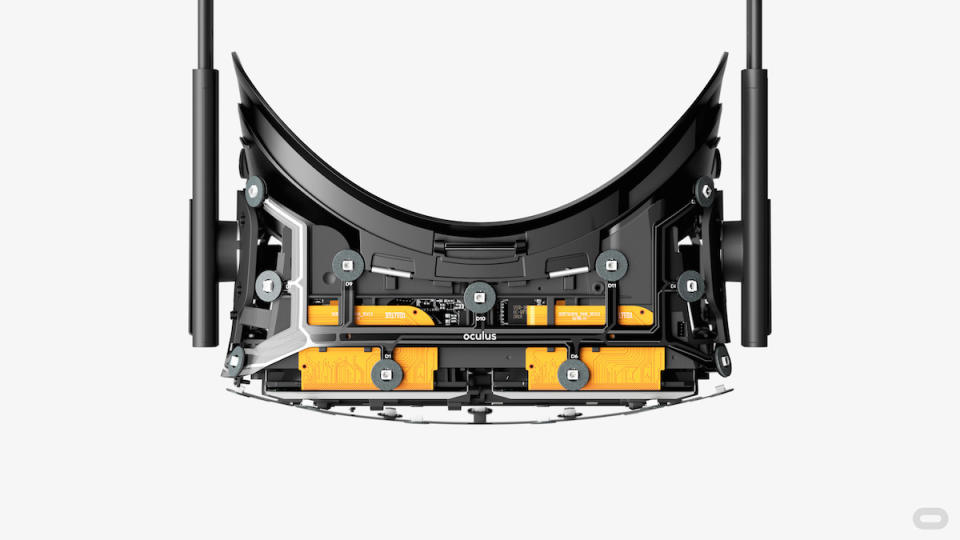Oculus Boss Palmer Luckey Apologizes for the Way He Handled Rift Pricing

Sorry! (Image: AP Photo/Eric Risberg)
To the relief of countless VR fans, Oculus finally unveiled the price for their Rift headset.
To the horror of countless VR fans, that price was $599.
Twitter erupted with tech-savvy types decrying the headset as vastly overpriced (while simultaneously bemoaning the fact that their pre-order wasn’t going through due to server strain). Grumpy hot takes popped up left and right. Despite being largely impressed with what they’ve seen of the Rift over the past several years, tech journalists faulted Oculus and its founder, Palmer Luckey, for seemingly letting greed get in the way of transformative tech.
Related: More coverage of CES 2016.
And the man behind it all is accepting the blame. Sort of.
“We didn’t do an incredible job messaging to people what this was going to cost,” Luckey told Yahoo Tech during a meeting at CES in Las Vegas. “I’ve been trying to revise expectations. I’ve made several mistakes.”
Muddled messaging
Specifically, Luckey says it all went awry when mainstream outlets began erroneously reporting that the cost for the Rift would be $1,500.
“We’ve been saying since May that the Rift is going to cost $1,500 all in – a PC and Rift. That got picked up by a lot of media as, ‘The Rift is gonna cost $1,500!’ And that’s a good thing. I’m happy that happened. Because to the average person – even the average gamer – a lot of them thought and still think that the Rift is an all-in-one device. I would rather have those people hear $1,500 and know what to invest than thinking, 'For $600 I’m ready to go.'”
But rather than simply correct folks by explaining how the Rift would have a standalone cost far lower than $1,500, he tossed out what he thought at the time was a safe number.
“There’s an oft-quoted line from an interview I did a while back saying the Rift would be ‘in the ballpark of $350.’ I should not have said those words. It wasn’t a lie. It was a bad way to phrase it. This was in the context of Oculus Connect [a developer-focused event in late September], where many outlets started re-running the $1,500 story. I had quite a few outlets ask about that. In that context, $599 seemed in the ballpark of $350. I phrased it poorly. I should fall on my sword for that. I have no excuse for it, but I have that explanation.”

Inside the Rift (Image: Oculus)
At the same time, Luckey still firmly believes the Rift is priced competitively.
“I think a lot of the people who aren’t upset with the price have bought consumer electronics before,” he says. “What does $599 get you? It gets you a good phone (unsubsidized). It gets you a mid-range 55-inch TV. It gets you a mid- to high-end gaming monitor. All of those are commoditized technologies selling to millions of people with far less technology [than what’s in the Rift]…it’s like a phone and game console and leather jacket combined. And we’re selling it as cheaply as we can. We’re not making money on the hardware.”
The upgrade cycle
They’re also not planning to gouge consumers by releasing a new iteration every year. Luckey wouldn’t confirm Oculus’ upgrade plans yet, but he said the Rift will likely follow a life cycle “between a phone and a game console.”
He also believes that releasing the best headset possible rather than worrying too much about the initial price will pay off in the long run.
“We wanted to make a product that prioritized quality over cost. We could have made something that cost $100 to $200 less, no question. But that would have meant making an inferior product that would have been worse than what some of our competition will be putting out. And second, I don’t think would have been good enough to make virtual reality something everybody wants to use.”
That concern — about not putting out a mediocre VR experience — is a big one to Luckey. Memories of failed VR devices linger in the public mind, and he believes you only get one shot at changing the mindset of those who think the latest wave of VR is just another trendy-but-doomed tech fad like 3D TV or the Segway.
“VR has to be something everyone wants before it can be something that everybody can afford,” he says. “The only way to get to the point where it’s affordable is to get huge volume; the only way to get huge volume is to make everybody want virtual reality, and making a really high quality product is the right way to do that.”
Ben Silverman hides from reality on Twitter at @ben_silverman.
More from CES 2016:

